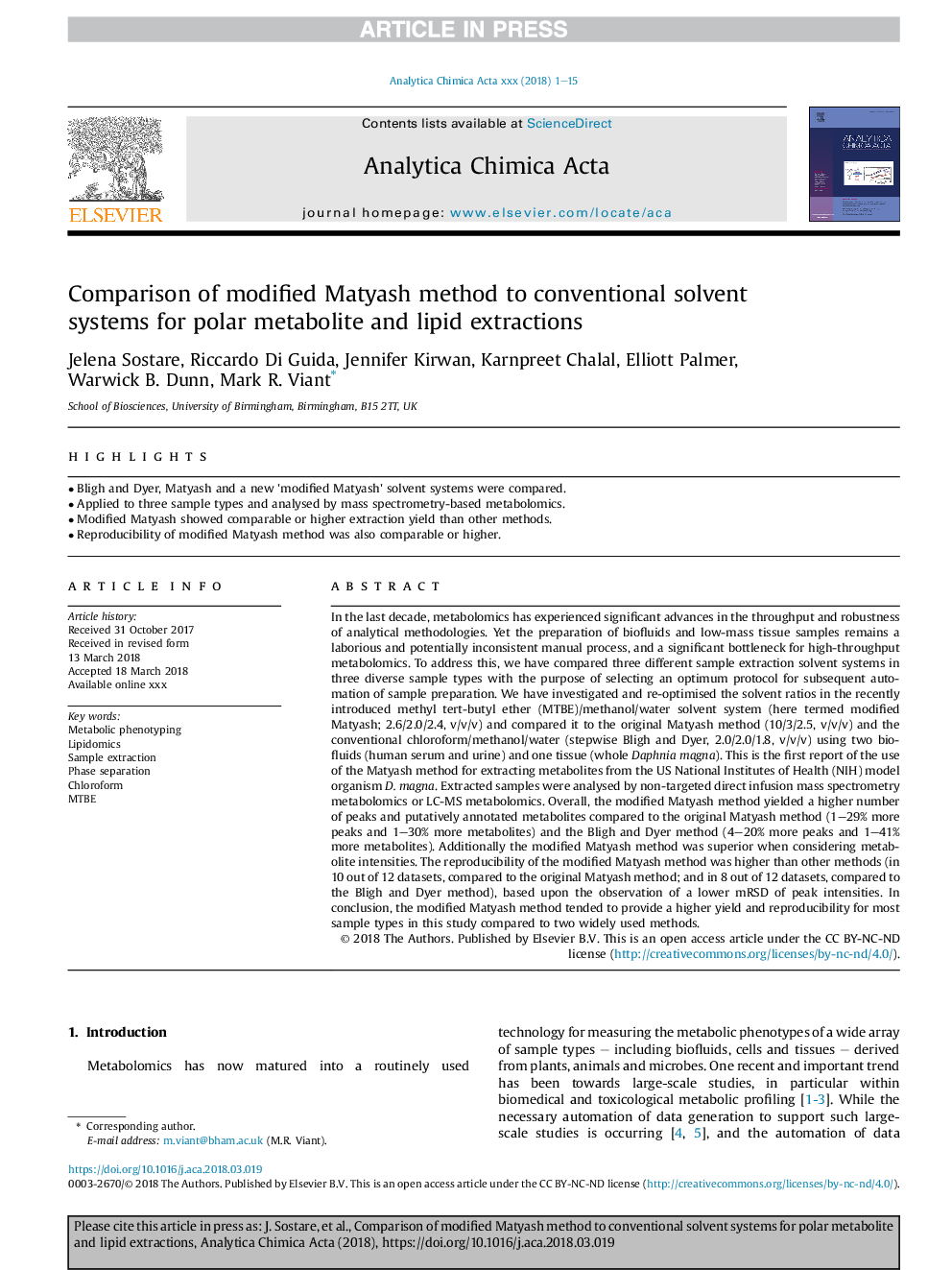| کد مقاله | کد نشریه | سال انتشار | مقاله انگلیسی | نسخه تمام متن |
|---|---|---|---|---|
| 11011876 | 1802852 | 2018 | 15 صفحه PDF | دانلود رایگان |
عنوان انگلیسی مقاله ISI
Comparison of modified Matyash method to conventional solvent systems for polar metabolite and lipid extractions
ترجمه فارسی عنوان
مقایسه روش ماتیوش اصلاح شده با سیستم های حلال متداول برای استخراج متابولیت های پلاری و لیپیدی
دانلود مقاله + سفارش ترجمه
دانلود مقاله ISI انگلیسی
رایگان برای ایرانیان
کلمات کلیدی
موضوعات مرتبط
مهندسی و علوم پایه
شیمی
شیمی آنالیزی یا شیمی تجزیه
چکیده انگلیسی
In the last decade, metabolomics has experienced significant advances in the throughput and robustness of analytical methodologies. Yet the preparation of biofluids and low-mass tissue samples remains a laborious and potentially inconsistent manual process, and a significant bottleneck for high-throughput metabolomics. To address this, we have compared three different sample extraction solvent systems in three diverse sample types with the purpose of selecting an optimum protocol for subsequent automation of sample preparation. We have investigated and re-optimised the solvent ratios in the recently introduced methyl tert-butyl ether (MTBE)/methanol/water solvent system (here termed modified Matyash; 2.6/2.0/2.4, v/v/v) and compared it to the original Matyash method (10/3/2.5, v/v/v) and the conventional chloroform/methanol/water (stepwise Bligh and Dyer, 2.0/2.0/1.8, v/v/v) using two biofluids (human serum and urine) and one tissue (whole Daphnia magna). This is the first report of the use of the Matyash method for extracting metabolites from the US National Institutes of Health (NIH) model organism D. magna. Extracted samples were analysed by non-targeted direct infusion mass spectrometry metabolomics or LC-MS metabolomics. Overall, the modified Matyash method yielded a higher number of peaks and putatively annotated metabolites compared to the original Matyash method (1-29% more peaks and 1-30% more metabolites) and the Bligh and Dyer method (4-20% more peaks and 1-41% more metabolites). Additionally the modified Matyash method was superior when considering metabolite intensities. The reproducibility of the modified Matyash method was higher than other methods (in 10 out of 12 datasets, compared to the original Matyash method; and in 8 out of 12 datasets, compared to the Bligh and Dyer method), based upon the observation of a lower mRSD of peak intensities. In conclusion, the modified Matyash method tended to provide a higher yield and reproducibility for most sample types in this study compared to two widely used methods.
ناشر
Database: Elsevier - ScienceDirect (ساینس دایرکت)
Journal: Analytica Chimica Acta - Volume 1037, 11 December 2018, Pages 301-315
Journal: Analytica Chimica Acta - Volume 1037, 11 December 2018, Pages 301-315
نویسندگان
Jelena Sostare, Riccardo Di Guida, Jennifer Kirwan, Karnpreet Chalal, Elliott Palmer, Warwick B. Dunn, Mark R. Viant,
